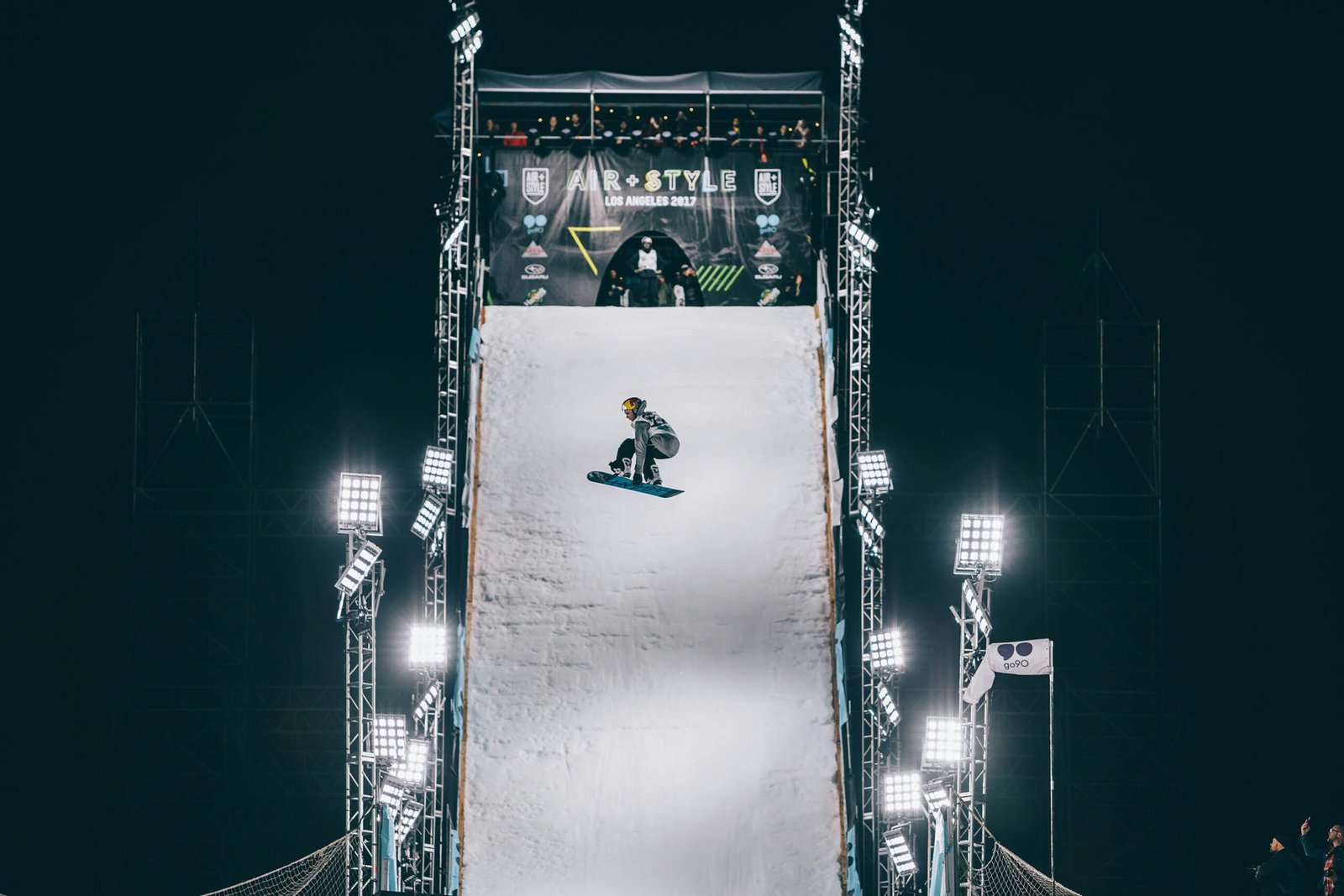Introduction to Skateboarding Tricks
Skateboarding tricks represent a fundamental aspect of the sport, embodying the creativity and skill of skateboarders. Essentially, a skateboarding trick involves any intentional maneuver executed on a skateboard, which may include flips, spins, grinds, and slides. These tricks not only showcase the athleticism and balance of the rider but also contribute significantly to the evolving culture surrounding skateboarding. The roots of these tricks can be traced back to the mid-20th century when informal skating emerged, leading to the invention of various moves through experimentation and creativity.
The importance of skateboarding tricks goes beyond mere performance; they serve as a form of self-expression and individuality within the skateboarding community. Each trick tells a story, reflecting the personal style and identity of the skater. Over the years, as the sport has gained popularity, the complexity of tricks has grown immensely. Tricks that once consisted of simple turns and slides have transformed into intricate, gravity-defying maneuvers that often push the bounds of physics. This evolution has attracted a wider audience, contributing to skateboarding’s recognition as a legitimate sport and art form.
Historically, the progression of skateboarding tricks can be seen in the introduction of the ollie—a foundational maneuver that enabled skaters to elevate their boards off the ground. This single trick opened the floodgates for further innovations, giving rise to an array of aerial tricks like the kickflip and the heelflip. As technology advanced and skateboard design improved, skaters began to explore new possibilities, leading to the advent of high-flying tricks such as the 900, performed by renowned athletes in competitions and exhibitions. These developments signify not only personal achievements for individual skaters but also milestones in the larger narrative of skateboarding culture.
The Birth of the Ollie
The late 1970s marked a pivotal moment in the world of skateboarding, largely due to the innovation of the Ollie, a trick birthed by skater Alan ‘Ollie’ Gelfand. Prior to this groundbreaking development, skaters often relied on grabbing their boards to execute aerial maneuvers, which limited the possibilities for trick progression. Gelfand’s invention of the Ollie transformed the landscape of skateboarding by introducing a technique that allowed skaters to pop their boards off the ground without needing to hold onto them. This new approach not only showcased an evolution in skill but also opened the door to a plethora of creative expressions in skating.
The Ollie involves a simple yet effective blend of footwork and board manipulation; the rider uses their back foot to snap the tail of the board while simultaneously dragging their front foot upward. This action creates the lift and height required for various tricks, propelling the skateboard into the air with precision. Videos from the era highlight Gelfand’s prowess, illustrating how he transitioned from flat ground to vertical surfaces with ease. The combination of technical execution and the sheer visual appeal of the Ollie resonated with skaters and enthusiasts alike.
The Impact of Street Skating
The emergence of street skating in the 1980s and 1990s marked a significant shift in the world of skateboarding, redefining the nature of tricks and the environment in which they were performed. Prior to this evolution, skateboarding was predominantly characterized by ramp skating, where skaters showcased their skills on established skate parks and half-pipes. However, as skateboarders began to explore urban settings, they discovered a plethora of unconventional obstacles that served as canvases for their creativity. This movement fostered a new genre of skateboarding that emphasized street obstacles such as curbs, stairs, benches, and handrails.
The influence of prominent skaters during this period cannot be overstated. Pioneering figures such as Mark Gonzales and Rodney Mullen played pivotal roles in popularizing street skating. Gonzales, often regarded as the godfather of street skating, introduced innovative tricks that were adapted to urban landscapes. Mullen, on the other hand, is credited with inventing numerous fundamental tricks, including the infamous whirlybird and heelflip, which laid the groundwork for many street skating maneuvers that followed. Their collective contributions resulted in an expansion of trick terminology and a shift in skating culture, promoting a more diverse and expressive form of skateboarding.
The Trick Revolution of the 1990s
The 1990s marked a significant turning point in the landscape of skateboarding tricks, characterized by innovations that propelled an entire generation of skateboarders to push their limits. A notable figure during this transformative era was Tony Hawk, whose dedication and skill played a pivotal role in shaping the future of skateboard tricks. Hawk’s iconic achievement, the 900, performed during the 1999 X Games, symbolized the zenith of vertical progression and set the standard for aerial maneuvers.
Skateboarders began experimenting with a myriad of techniques, capturing the essence of creativity and athleticism. The emergence of street skating in urban environments led to new inventions of ground tricks. Many skaters incorporated flips, grinds, and slides into their routines, creating a unique style that diverged from traditional vertical tricks. This era witnessed the introduction of tricks such as the shove-it and the kickflip, which became foundational elements of street skating culture.
The competitive framework of skateboarding also evolved during this time, with events specifically designed to showcase the growing repertoire of tricks. The rise of skate parks and sanctioned competitions offered venues for skateboarders to display their skills and creativity. These competitions allowed them to connect with their peers and provided a platform for their innovative tricks to be recognized and celebrated. The combination of street and vert tricks created a melting pot of influence, leading to a rich variety of styles.
As skateboarders embraced the challenge of new tricks, they fostered an environment that encouraged progression. The decade’s trick revolution had a lasting impact on future generations, as the upper limits of what was possible in skateboarding were continually redefined. This spirit of innovation laid the groundwork for subsequent advances in skateboarding, maintaining its relevance in youth culture today.
The Role of Technology and Equipment
The evolution of skateboarding tricks has been significantly influenced by advancements in technology and equipment design. Over the years, skateboard decks have undergone substantial changes in shape, size, and materials, all of which play a vital role in how tricks are performed. The introduction of lighter, more durable materials such as maple wood, fiberglass, and even carbon fiber has enabled skaters to achieve better control and enhance their performance.
Deck shapes have also been tailored to accommodate specific tricks. For instance, the concave design of modern decks allows for better foot placement and grip, facilitating tricks like the ollie—a foundational trick that has paved the way for more complex maneuvers. This technological innovation has empowered skaters to push the limits of creativity in their performances.
Additionally, the evolution of wheels has transformed how skaters interact with different surfaces. Contemporary wheel materials, such as urethane, provide optimal grip and responsiveness, which is crucial for executing high-speed tricks and navigating various terrains. The hardness and shape of wheels now allow for smoother landings and more efficient slides, making it easier for skaters to perform advanced tricks safely.
Truck technology has equally progressed, leading to a more refined experience on the board. Modern trucks feature improved axle designs and adjustable kingpins, offering skaters the agility needed for performing intricate tricks. The ability to customize truck widths and heights also allows for personalized setups that cater to individual skating styles, further influencing the variety and complexity of tricks developed over time.
In conclusion, advancements in skateboard technology and equipment have profoundly affected the performance and execution of tricks. Skaters can now explore their creativity with greater safety and effectiveness, reflecting the ongoing transformation of this dynamic sport.
Women in Skateboarding: A New Wave of Tricks
The evolution of skateboarding tricks has been significantly influenced by the contributions of female skaters, particularly during the 2000s and 2010s. Traditionally perceived as a male-dominated sport, skateboarding has witnessed an impressive rise in female participation, which has correspondingly enriched the diversity of tricks and styles showcased in the skateboarding arena. Women have not only embraced existing tricks but have also innovated and adapted them, fostering a new wave of creativity and skill that has captivated audiences globally.
Pioneering figures such as Elissa Steamer and Lyn-Z Adams Hawkins have played pivotal roles in pushing the boundaries of what is achievable on a skateboard. Steamer, known for her powerful street skating and technical prowess, demonstrated that women could compete at the highest levels while executing tricks such as the kickflip and 360 flip with precision and grace. Her influence helped to elevate the visibility of female skaters, inspiring a new generation to take to the streets and skate parks.
Meanwhile, Lyn-Z made headlines with her groundbreaking accomplishments in vert skating. She became the first woman to land a 540-degree spin during a contest, showcasing the potential for women to master more complex tricks traditionally dominated by male counterparts. Women like these have not only set records but have also fostered a culture of inclusivity that encourages many aspiring female skaters to pursue their passion for trick innovation.
Moreover, the rise of organizations and events focused solely on female skaters has highlighted this demographic’s talent, such as the Vans Girls Combi Classic and the Women’s Skateboarding Alliance. These initiatives have provided platforms for female skaters to showcase their talent, thereby reinforcing the narrative that skateboarding is for everyone, irrespective of gender. Overall, the contributions of women in skateboarding have significantly altered the landscape, proving that the evolution of tricks is now a collective effort enriched by diverse perspectives.
The Influence of Social Media on Trick Evolution
In recent years, social media platforms such as Instagram and YouTube have transformed the landscape of skateboarding, providing a dynamic medium for skaters to exhibit their talents and share tricks with the world. These platforms have acted as a catalyst, accelerating the evolution of skateboarding tricks in unprecedented ways. Unlike previous eras, where skaters relied heavily on local communities and magazines, the digital age allows for instant sharing and global reach, resulting in immediate feedback and inspiration.
Skaters now have the capability to post videos of their latest tricks, from simple ollies to complex 900s, and garner reactions from audiences worldwide. This visibility encourages innovation, as skaters are often motivated to experiment and push boundaries, inspired by what they see from their peers. The collaborative nature and rapid dissemination of skateboarding content on social media directly influence trends, allowing emerging tricks to gain popularity almost overnight. Additionally, skaters can easily learn techniques and styles from prominent athletes by following their accounts, bridging the gap between expertise and novice skill levels.
Furthermore, social media has fostered networking within the skateboarding community. Skaters from diverse backgrounds can connect, share ideas, and collaborate on projects, intertwining cultures and techniques in the process. The community has become more inclusive, and the evolution of tricks reflects this blend of global influences. This accelerated evolution is not merely a reaction to social media but has also created an expectation for continuous performance improvement and creativity among skaters. As these platforms evolve, so too will the tricks being executed, keeping the skateboarding culture in a state of dynamic growth and innovation.
Current Trends and Future Directions
The landscape of skateboarding tricks has evolved significantly, reflecting both innovation and respect for the foundational maneuvers that have shaped the sport. Today, many skaters are pushing the boundaries of technicality by integrating elements that were once considered impossible. This evolution often draws inspiration from the iconic tricks of the past, such as the ollie and the kickflip, demonstrating a deep appreciation for the history of skateboarding. While new tricks continue to emerge, there is a notable trend towards hybrid and combination maneuvers, where skaters execute multiple tricks in a single line, fostering creativity and complexity.
Another current trend is the integration of technology in skateboarding. With advancements in materials and design, new types of skateboards facilitate the execution of tricks that were previously limited by physical equipment. Lightweight boards with improved grip and performance characteristics enable skaters to attempt more ambitious tricks, such as the 900 and beyond. Furthermore, the rise of online video platforms has allowed skaters to showcase their skills globally, prompting a rapid exchange of techniques and styles. This phenomenon has accelerated the evolution of skateboarding tricks and nurtured a trend towards more diverse and inventive approaches.
Looking to the future, the sport is likely to continue to evolve as new generations of skaters bring their unique perspectives and experiences. The fusion of different styles, such as street and vert skating, may inspire entirely new categories of tricks. Additionally, the influence of other action sports could foster cross-disciplinary trick development, resulting in an even broader skill set. With skateboarding now recognized as an Olympic sport, there is a potential for increased visibility and mainstream acceptance, which may drive further innovation while still honoring the rich history of skating culture. The balance between respecting traditional techniques and embracing modern creativity is crucial for the future of skateboarding tricks.
Conclusion: The Endless Evolution of Skateboarding Tricks
The world of skateboarding tricks has witnessed an extraordinary evolution since its inception. From the early days characterized by basic moves such as the ollie to the breathtaking complexity of modern tricks like the 900, skaters have consistently pushed the boundaries of what is possible on a skateboard. This journey reflects not only the advancement of technique and equipment but also embodies the creativity and passion of a vibrant community dedicated to the sport.
Throughout the years, skateboarders have embraced innovation, developing new tricks that often redefine the standards of skill and creativity. The introduction of specific techniques—such as kickflips, heel flips, and grinds—demonstrates the skater’s adaptability and willingness to explore uncharted territory. As skaters continuously seek to elevate their game, these innovations have led to the formation of intricate trick combinations that contribute to the ever-evolving narrative of skateboarding.
As we celebrate the history of skateboarding tricks, it is equally important to acknowledge the future of the sport. The relentless pursuit of creativity ensures that the evolution will continue, inspiring young skaters to develop their unique styles and contribute to the rich tapestry of skateboarding. The commitment to experimentation and the sharing of knowledge among skateboarders fosters a culture where collaboration and individuality thrive, ensuring that the landscape of tricks remains vibrant and dynamic.
Ultimately, the evolution of skateboarding tricks serves as a testament to the art and sport intertwined in the skateboarding culture. It encourages enthusiasts and newcomers alike to appreciate the growth experienced over the years and to anticipate the exciting developments on the horizon. The passion driving this evolution is a perpetual reminder of skateboarding’s role as both an athletic endeavor and a form of expression.








Leave a Reply